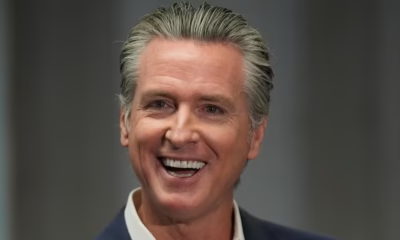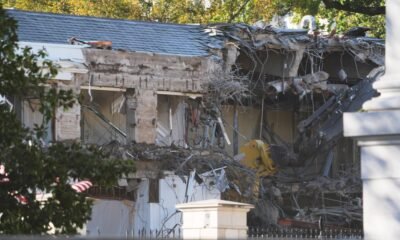Politics
He spoke till sunrise: Jeff Merkley’s 16-hour protest speech against Donald Trump shocks Washington
The Oregon Democrat’s overnight filibuster was part protest, part endurance test — and a symbolic stand against what he called Trump’s “authoritarian drift.”
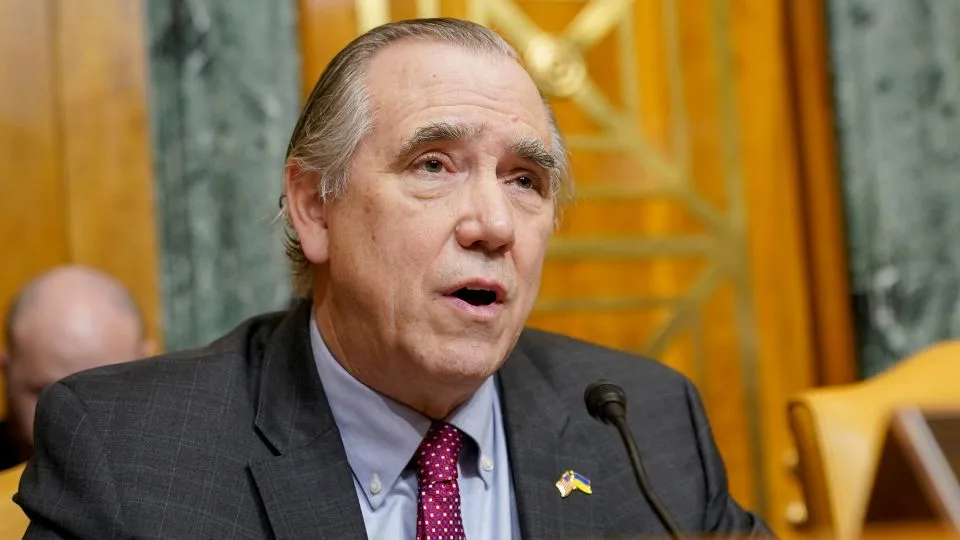
At 2:45 a.m. inside the dimly lit chamber of the U.S. Senate, Sen. Jeff Merkley slowly bent over and untied his shoelaces. The nearly 69-year-old lawmaker had been standing for more than 16 straight hours, still speaking, still defiant, still railing against what he called the “authoritarian slide” of Donald Trump’s administration.
“I’m not here to rest,” Merkley said, his voice raspy but steady. “I’m here to resist — because silence is complicity.”
Merkley, a Democrat from Oregon, began his marathon speech at 6:21 p.m. on Tuesday and carried it through the night into Wednesday afternoon — clocking nearly 18 hours of uninterrupted oratory. His aim? To protest the ongoing government shutdown and denounce the Trump administration’s policies, which he described as “eroding democracy from within.”
ALSO READ : ‘Matlock’ Actor David Del Rio Abruptly Fired After Alleged Sexual Assault Report — CBS Responds
A protest that froze the Senate
The Senate chamber was nearly empty through much of the night, with only the flickering TV cameras of C-SPAN recording his lonely stand. Still, Merkley’s words echoed across social media. His official X account live-tweeted highlights from the floor: charts, statistics, and quotes warning of the “human toll” of the shutdown on federal employees and small businesses.
“Every time this administration shuts down the government, families suffer,” Merkley said. “This isn’t governance — it’s hostage-taking.”
Lawmakers from both parties occasionally slipped in and out of the chamber, some offering him brief encouragement. But most of Washington slept while Merkley pressed on — pacing slowly, sipping water, and loosening his shoes to relieve swelling feet.
By sunrise, his voice had grown hoarse, but his determination remained intact.
An old-school filibuster with a modern twist
Merkley’s move revived a rarely used procedural weapon — the filibuster — to delay votes and draw national attention. Unlike the silent filibusters that have dominated recent years, Merkley’s was spoken live, the old-fashioned way: one senator, one microphone, endless hours.
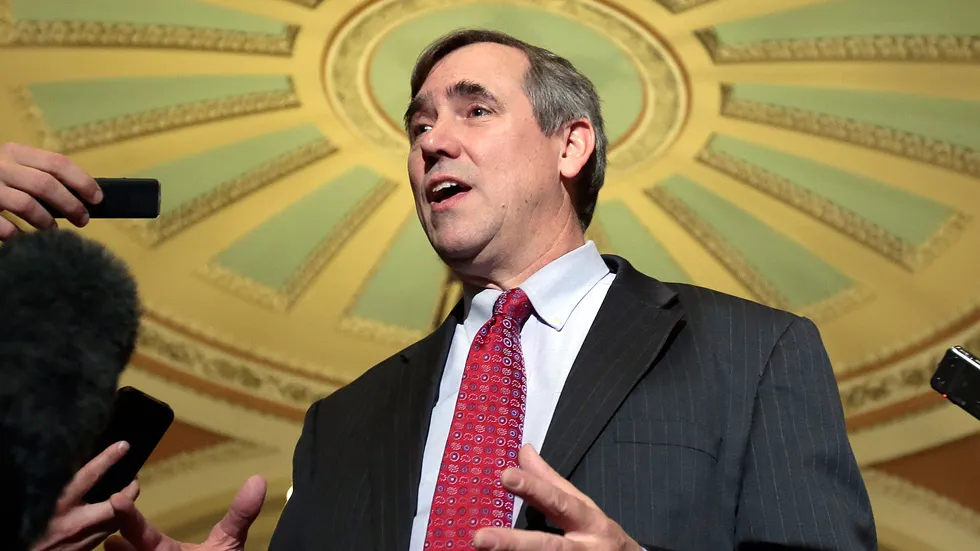
Political historian Julian Zelizer of Princeton University described it as “a throwback to the golden age of Senate debate — but in this case, a cry of frustration rather than persuasion.”
“Merkley isn’t changing votes,” Zelizer told NPR. “He’s trying to change the conversation.”
And that, it seems, was exactly the point. His speech catalogued a list of grievances — from Trump’s immigration policies to his handling of federal agencies — arguing that “authoritarian behavior” was creeping into U.S. governance.
Why Merkley’s protest matters
While Merkley is not a household name like Bernie Sanders or Elizabeth Warren, his dramatic floor stand drew applause from progressive circles and reignited debate over whether Democrats should take a tougher rhetorical stance against Trump’s policies.
On X, fellow lawmakers praised his stamina.
Cory Booker called him “a warrior for democracy.”
Alexandria Ocasio-Cortez posted, “16 hours for the people. This is what standing up looks like.”
Republicans, however, dismissed the marathon as political theater. One GOP aide told Politico that “no amount of talking will reopen the government — action will.”
Still, Merkley’s stand seemed to strike a chord with Americans weary of partisan paralysis. Within hours, hashtags like #StandWithMerkley trended across social platforms, and grassroots groups began fundraising off his speech.
Exhaustion and resolve
By noon Wednesday, Merkley had spoken for roughly 18 hours, concluding with a quiet, almost poetic line:
“Democracy doesn’t die in darkness. It dies in silence — and I refuse to be silent.”
He left the floor to applause from Senate staff and a few bleary-eyed colleagues. Later, outside the chamber, Merkley smiled when asked if he’d do it again.
“If it wakes people up to what’s at stake,” he said, “I’d talk for another 18.”
Politics
Fed Cuts Rates Again, but Jerome Powell Warns “Don’t Assume Another Cut in December”
The Federal Reserve, led by Chair Jerome Powell, approved a second consecutive interest rate cut to 3.75–4%, but uncertainty looms over future easing as policymakers clash on inflation, jobs, and data scarcity.
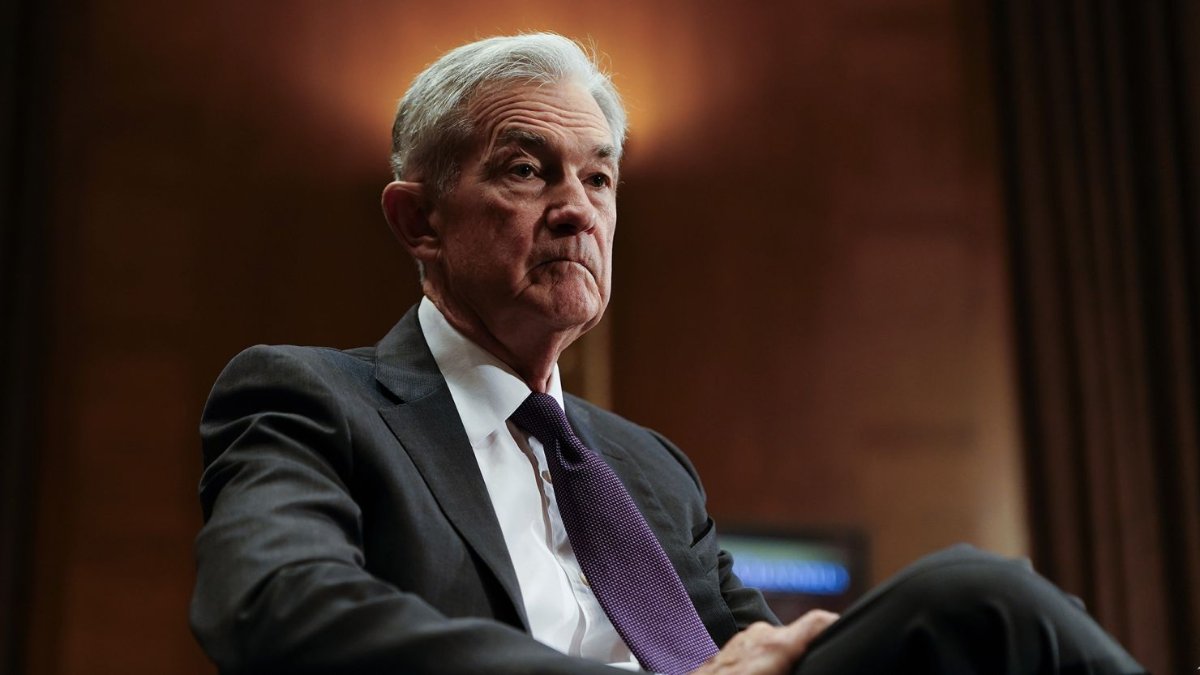
In a move closely watched by global markets, the Federal Reserve on Wednesday announced its second consecutive interest rate cut, lowering the benchmark federal funds rate to a range between 3.75% and 4%. The decision, backed by an overwhelming 10-2 vote, signals a cautious shift toward monetary easing—yet Fed Chair Jerome Powell quickly dampened expectations of further cuts in December, unsettling investors.
A Divided Committee
The Federal Open Market Committee (FOMC)’s decision reflects deep internal divisions. While most members supported the quarter-point reduction, Governor Stephen Miran, a Donald Trump appointee, pushed for a half-point cut, citing the need for faster policy support. Meanwhile, Jeffrey Schmid, President of the Kansas City Fed, dissented in the opposite direction, arguing against any further easing.
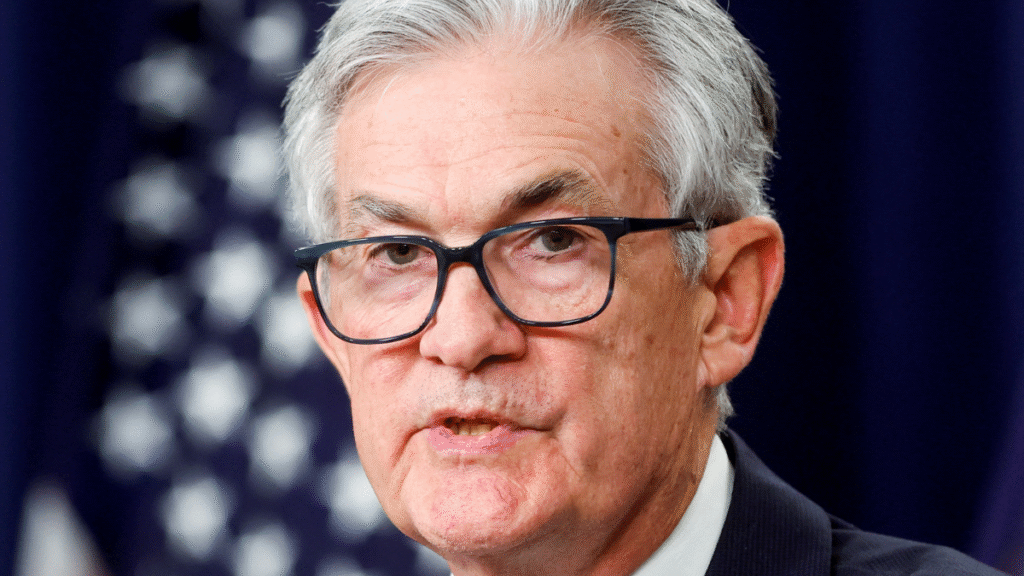
The decision also included a major policy shift: the end of quantitative tightening (QT)—the Fed’s process of shrinking its balance sheet—effective December 1. This signals a pause in the Fed’s multi-year effort to unwind its massive $6.6 trillion asset holdings accumulated during the pandemic.
“Downside risks to employment have risen in recent months,” the Fed noted, indicating growing concern about the labor market despite inflation remaining above the 2% target.
Powell: “A Further Cut Is Not a Foregone Conclusion”
Speaking at his post-meeting press conference, Jerome Powell emphasized the central bank’s cautious stance:
“In the committee’s discussions at this meeting, there were strongly differing views about how to proceed in December,” he said. “A further reduction in the policy rate at the December meeting is not a foregone conclusion. Far from it.”
Powell added that there was “a growing chorus” among the 19 policymakers to “wait a cycle” before cutting again, suggesting that the Fed may pause to assess the impact of its recent moves.
Following his comments, market expectations for another December rate cut dropped sharply—from 90% to 67%, according to CME Group’s FedWatch Tool.
Markets React to Mixed Signals
Initially, U.S. stocks climbed on news of the rate cut but reversed course as Powell’s cautious tone sank in. The Dow Jones Industrial Average, S&P 500, and Nasdaq Composite all dipped before clawing back modest gains by session close.
Analysts described the Fed’s tone as “hawkish dovishness”—a balancing act between acknowledging economic risks and curbing inflationary fears.
“Powell is walking a tightrope,” said economist Krishna Guha of Evercore ISI, who believes the Fed could even restart bond purchases in 2026 if liquidity tightens again. “He’s signaling patience, not panic.”
Fed Flying Blind Without Fresh Data
Complicating the Fed’s task, the U.S. government’s recent data blackout means key metrics—such as nonfarm payrolls, retail sales, and GDP revisions—remain unavailable. The only major report released was the Consumer Price Index (CPI), showing inflation at 3%, driven by higher energy costs and items linked to Trump-era tariffs.
In its statement, the Fed acknowledged the uncertainty:
“Available indicators suggest that economic activity has been expanding at a moderate pace. Job gains have slowed, and the unemployment rate has edged up but remains low… Inflation has moved up since earlier in the year and remains somewhat elevated.”
The revised language—shifting from “moderated” to “expanding”—signals cautious optimism but also underscores the Fed’s struggle to balance full employment with price stability.
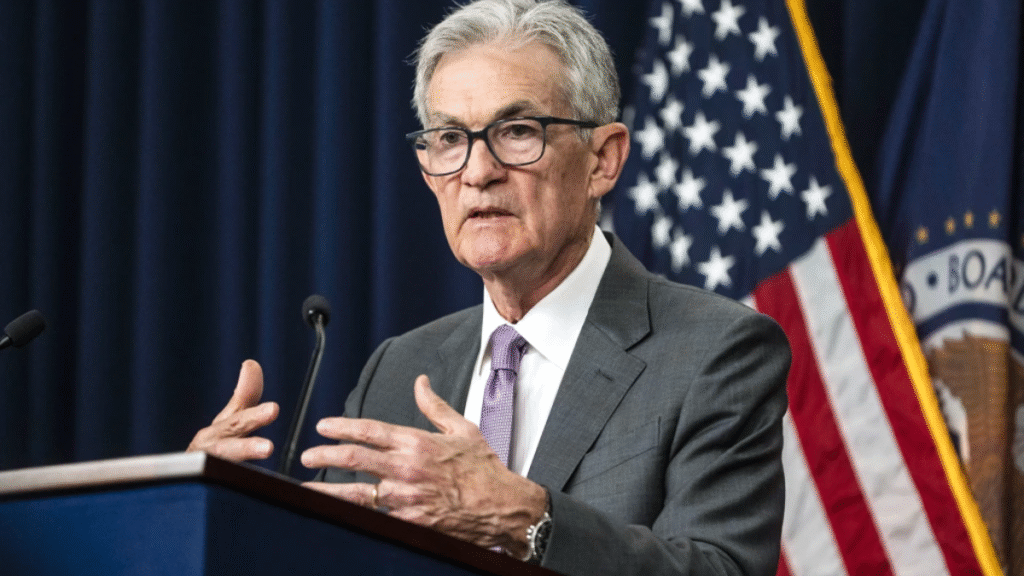
Ending Quantitative Tightening
The decision to halt quantitative tightening marks another major policy shift. QT had reduced the Fed’s balance sheet by $2.3 trillion, as the central bank let Treasury and mortgage securities mature without reinvestment.
An implementation note confirmed that the Fed will begin reinvesting maturing mortgage proceeds into short-term Treasury bills, effectively stabilizing its portfolio.
Powell reiterated that while shrinking the balance sheet was necessary, the Fed “does not expect to return to pre-pandemic levels.”
Political and Policy Pressure
President Donald Trump, who has frequently criticized the Fed for being too slow to lower rates, renewed calls for deeper cuts to support growth ahead of the 2026 election cycle. However, Powell has repeatedly stressed the Fed’s independence.
The central bank’s current stance appears to favor data dependency—waiting for clearer signals on jobs and inflation before acting again.
Looking Ahead: Uncertainty Dominates
The Fed’s final meeting of the year, scheduled for December, will be pivotal. While some traders expect another small cut, others warn that continued inflation pressures and data scarcity could prompt a pause.
“Powell is right to be cautious,” said Michael Arone, chief investment strategist at State Street Global Advisors. “Cutting too fast could reignite inflation, while moving too slowly risks a labor-market slide.”
For now, markets are bracing for volatility — torn between optimism over easing and fear that the Fed may “wait and watch” longer than expected.
Politics
Big Cities, Bigger Stakes: Which Mayors Are Up for Grabs on November 4?
From New York City to Boston and Seattle — the 2025 mayoral elections could reshape leadership across America’s most powerful urban centers.

The Battle for America’s City Halls Begins
The 2025 municipal election season is heating up — and while it’s not a presidential or midterm year, the political consequences could ripple far beyond city limits. On Tuesday, November 4, millions of voters will cast their ballots in mayoral races that define the future of some of the country’s most influential cities — from New York City to Atlanta.
These elections span seven major metropolitan areas — New York City, Boston, Seattle, Cleveland, Detroit, Minneapolis, and Atlanta — together home to more than 11.8 million people.
Let’s take a closer look at the cities — and the leaders — shaping this pivotal local election season.
ALSO READ : Rockets Guard Fred VanVleet Tears ACL and Likely to Miss 2025-26 Season
The New York City mayoral race has grabbed national headlines, largely thanks to the clash between progressive newcomer Zohran Mamdani and establishment heavyweight Andrew Cuomo.
Which U.S. Cities Are Electing New Mayors in 2025? Inside the Races in NYC, Boston, and Seattle
Mamdani, a Democratic Socialist and current New York State Assembly member, is leading most polls with roughly 45 percent support. His campaign has captured the imagination of younger and working-class voters, framing itself as a fight for affordable housing, transit reform, and economic equity.
Cuomo, the former Governor of New York, is running as an independent in what analysts call a “political redemption tour.” Despite scandals that led to his 2021 resignation, Cuomo has found traction among moderate Democrats and older New Yorkers nostalgic for his leadership.
Meanwhile, Republican candidate Curtis Sliwa — founder of the Guardian Angels — continues to appeal to law-and-order conservatives, polling around 15 percent.
“We’re witnessing a generational and ideological realignment of urban politics,” said Mark Levine, Manhattan Borough President, in an interview with local media.
Early voting began October 25, and turnout has already surpassed expectations.
Boston: Michelle Wu’s Near-Certain Second Term
In Boston, Mayor Michelle Wu is cruising toward reelection, facing little serious opposition.
Her closest challenger, Josh Kraft, a nonprofit executive and son of Robert Kraft — owner of the New England Patriots — withdrew after the preliminary round, virtually guaranteeing Wu’s victory.
Wu’s administration has been praised for tackling housing affordability and public transit issues while maintaining strong ties with Boston’s tech and education sectors. Her unopposed run speaks volumes about her approval ratings — but also raises questions about local competition in the city’s political ecosystem.
Seattle: A Progressive Tide in the Pacific Northwest
In Seattle, the race between incumbent Mayor Bruce Harrell and challenger Katie Wilson is tightening by the day.

Harrell, a centrist Democrat, has highlighted his record on public safety and homelessness, while Wilson — a community organizer — has energized grassroots supporters by promising bold housing reforms and climate-forward city planning.
The primary election in August shocked many when Wilson narrowly outpolled Harrell, setting up what observers call a “progressive vs. pragmatist” showdown.
“This race reflects a generational divide in how cities approach progressivism,” noted Norm Rice, Seattle’s first Black mayor.
Cleveland and Atlanta: Local Leadership in Transition
In Cleveland, Mayor Justin Bibb — one of the youngest big-city mayors in the U.S. — faces a re-election challenge from businesswoman LaVerne Gore.
Meanwhile, Atlanta Mayor Andre Dickens seeks a second term amid debates over crime reduction, affordable housing, and Atlanta’s controversial “Cop City” training facility project.
Both races are seen as referendums on urban reform: can progressive mayors maintain momentum when voters demand stronger safety and economic results?
Minneapolis and Detroit: Battling for Community Trust
In Minneapolis, the race between incumbent Jacob Frey and activist Sheila Nezhad is once again dominated by public-safety reform, five years after the George Floyd protests transformed city politics.
Detroit, under Mayor Mike Duggan, faces an economic-revival test — with challengers promising to deliver more equitable redevelopment in post-industrial neighborhoods.
Why These Mayoral Races Matter Nationwide
Although these are local contests, the outcomes may shape national Democratic Party strategy ahead of 2026 midterms. Urban mayors often serve as testing grounds for new policies — from housing and public transit to policing and climate resilience.
Political analyst Van Jones wrote on X that “City Halls are where the next generation of national leaders are born — or broken.”
With cities now at the forefront of America’s cultural and economic debates, the November 4 elections promise not just new mayors — but new directions for how U.S. cities define leadership itself.
Politics
Trump’s $300 Million White House Ballroom Sparks Uproar as Entire Fine Arts Commission Is Fired
In a stunning shake-up, all six members of the U.S. Commission on Fine Arts were dismissed amid backlash over President Donald Trump’s plan to build a massive 90,000-square-foot ballroom at the White House.

The White House has become the epicenter of another storm — and this time, it’s not about politics, but architecture. In a move that stunned Washington insiders and preservationists alike, President Donald Trump’s administration has fired all six members of the U.S. Commission on Fine Arts, the federal body that traditionally oversees design integrity in America’s most iconic buildings.
The firings come just a week after demolition began on the White House’s East Wing to make space for a $300 million, 90,000-square-foot ballroom — a project Trump reportedly sees as a “monument to American greatness.”
A White House official told USA Today that the administration plans to appoint a new slate of commissioners who are “more aligned with President Trump’s America First vision.”
ALSO READ : Rockets Guard Fred VanVleet Tears ACL and Likely to Miss 2025-26 Season
A Historic Commission Dismissed
The U.S. Commission on Fine Arts, established by Congress in 1910, has long served as the guardian of Washington’s visual and cultural identity. It advises the President, Congress, and the National Park Service on matters of design, aesthetics, and preservation. The wholesale dismissal of its members is rare — the last comparable instance occurred over half a century ago.
Among those ousted are prominent architects and art historians who had been vocal about the need to protect the White House’s architectural heritage. Their removal has sparked outrage among preservation groups, including the National Trust for Historic Preservation, which has urged an immediate halt to demolition.
Preservationists Sound the Alarm
In a strongly worded letter, Carol Quillen, president and CEO of the National Trust for Historic Preservation, warned that the proposed ballroom could “overwhelm the White House itself.” She pointed out that the mansion currently comprises just 55,000 square feet — meaning the new addition would nearly double its size.
Quillen’s organization has asked the National Capital Planning Commission (NCPC) and the National Park Service (NPS) to enforce federal review processes before further work continues. “We are deeply concerned that this project bypasses the legally required consultation procedures,” the letter stated.

Critics Call It “Architectural Hubris”
Former First Lady Hillary Clinton joined the chorus of critics, calling the demolition of the East Wing “a reckless erasure of history for vanity’s sake.” Clinton, who once oversaw restorations of the White House interiors during her tenure, said the ballroom “represents more ego than elegance.”
Architectural experts have echoed these concerns, calling the scale of the project “unprecedented.” One former commission member, speaking anonymously to The Washington Post, described the plan as “architectural hubris — a personal statement disguised as public space.”
Trump’s Vision: “A Ballroom for the People”
Despite the backlash, Trump’s aides insist that the project reflects his vision to create “a space worthy of state functions, global diplomacy, and cultural excellence.” According to insiders, the ballroom — adorned with gilded chandeliers and marble floors — is designed to host everything from state dinners to cultural galas.
Supporters of the project argue it will “cement Trump’s legacy as the President who brought grandeur back to the White House.” They compare it to the Versailles-style expansions of European palaces, suggesting that the ballroom could become “America’s new architectural marvel.”
However, critics counter that such comparisons betray the White House’s very spirit — a building intended to represent democracy, not monarchy.
Legal and Political Fallout Looms
Legal experts warn that bypassing the National Environmental Policy Act (NEPA) review and the NCPC process could expose the administration to lawsuits. “Demolishing a federally protected structure without proper review violates multiple preservation laws,” said one former NPS official.
Congressional Democrats are reportedly exploring options to freeze funding for the project until a full review is conducted. Nancy Pelosi has called for an “immediate congressional inquiry” into the demolition, while Republican allies have framed the controversy as “part of Trump’s ongoing war against bureaucracy.”
The Bigger Picture: Art, Power, and Legacy
This latest controversy underscores Trump’s ongoing battle with cultural institutions. From proposing “patriotic education” to altering the design of federal buildings, the former president has long sought to reshape America’s aesthetic identity.
Political historian Jon Meacham told CNN that the ballroom project “perfectly captures the Trump era — a blend of ambition, disruption, and disregard for convention.”
If completed, the 90,000-square-foot ballroom would become the single largest expansion of the White House in over a century, dwarfing additions made during the Harry S. Truman renovation of the 1940s.
What’s Next for the White House?
As demolition continues, uncertainty looms. Will the courts intervene to halt construction, or will the Trump administration press ahead in defiance of critics?
For now, the White House remains a construction zone — both literally and symbolically. The battle over its walls has become a battle over America’s soul, where preservation meets populism, and history collides with ambition.
-
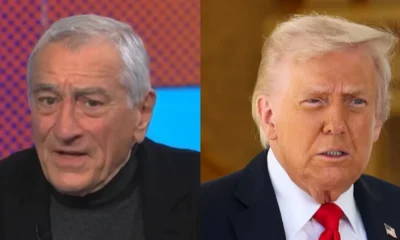
 Entertainment7 days ago
Entertainment7 days agoRobert De Niro slams ‘King Donald I’ and calls Americans to rise again — says ‘we can’t let up’ against Trump’s bullying tactics
-

 Entertainment4 days ago
Entertainment4 days agoFans Can’t Believe Susan Boyle’s Stunning New Look… “She’s Unrecognizable!”
-
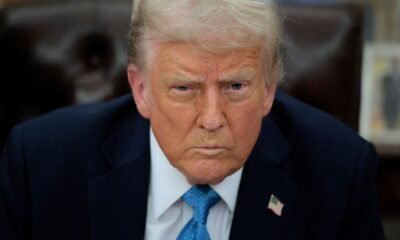
 Politics6 days ago
Politics6 days agoWhy Donald Trump Suddenly Ended All Trade Talks With Canada — And the Unexpected Role of Ronald Reagan
-

 Sports1 week ago
Sports1 week ago“Chasing more than a conference crown… Purdue Boilermakers set sights on national glory after historic preseason No. 1 nod”
-

 Sports1 week ago
Sports1 week agoHistory made! Purdue Boilermakers grab first-ever No. 1 spot in USA TODAY Sports preseason men’s basketball poll — can they finally win it all?
-

 Politics6 days ago
Politics6 days agoCharlotte Train Horror: Why a Ukrainian Refugee’s Killing Has Sparked a Death Penalty Case That’s Shaking America
-

 Entertainment7 days ago
Entertainment7 days agoDonald Trump fumes as Bad Bunny becomes first-ever Spanish-only Super Bowl headliner — NFL says decision was ‘carefully thought through’
-
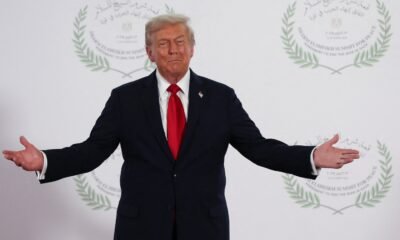
 Politics1 week ago
Politics1 week agoPoll shocker: Donald Trump’s approval rating climbs as Americans surprisingly back a Palestinian state








